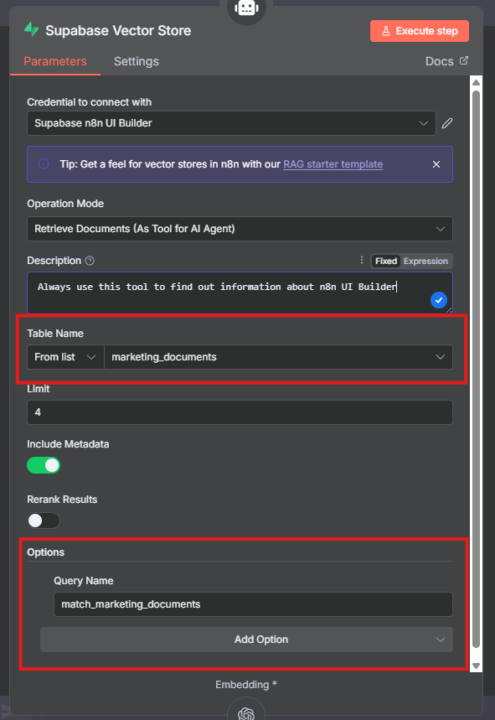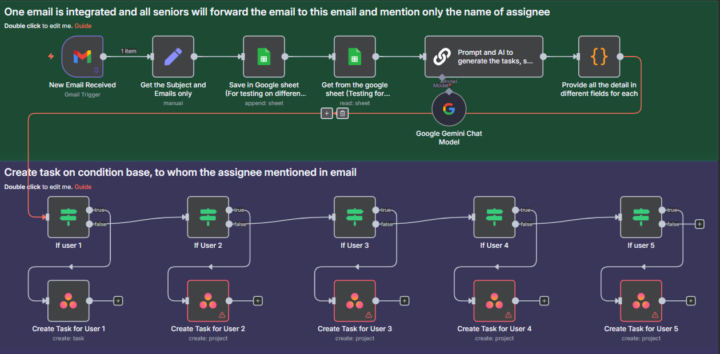Activity
Mon
Wed
Fri
Sun
Oct
Nov
Dec
Jan
Feb
Mar
Apr
May
Jun
Jul
Aug
Sep
What is this?
Less
More
Memberships
Agency Flywheel Hub
5.5k members • Free
Ads That Slay Social Marketing
64 members • Free
AI Automation Society
144k members • Free
AI Automation (A-Z)
99.8k members • Free
AI Automation Agency Hub
248.8k members • Free
Digital Wealth Creators
15.4k members • Free
Creator Boost Tribe
7.4k members • Free
5 contributions to AI Automation Society
Hey everyone! 👋
Excited to be here with you all. I’m the founder of Elegant Luxe Com, an 8-figure eCom brand, and I have recently been diving deep into AI-driven automation to optimize the back end of my business. I have used AI to streamline everything from customer support and fulfillment to ad creative workflows and daily ops. But I know we’re only scratching the surface of what’s possible with AI agents and smarter systems. I joined this community to learn, share, and collaborate with others who are serious about building lean, intelligent operations with AI at the core. If you’re using AI in creative ways, especially for eCom or systems, I would love to connect. Let’s build smarter. Looking forward to learning from you all

My Supabase RAG Revelation
(this can save you time) I just discovered a gotcha with Supabase’s VectorStore: no matter which table you pick in the UI, it always hits the “Documents” table you created via the Supabase Docs SQL snippet. My client has two separate business types, but I use the same Supabase project for both. So the newly created chatbot was querying the wrong database. Turns out Supabase VectorStore defaults to “Documents” every time—which is fine if you only have one table, but a recipe for confusion when you spin up a second bot inside the same project. The fix is simple: open your VectorStore settings, click the query name, and change the table reference from “Documents” to your actual table. It exists by default. Do that once and you’ll avoid pulling answers from yesterday’s bot. Hope this saves you the same headache. P.S.: To create a table with a different you'll need to alter the SQL query a bit.

4 likes • Jul 28
@Kirill Zolygin This is such a helpful catch. Supabase’s default behavior with the “Documents” table can sneak up on you. Thanks for sharing the fix so clearly. Having multiple bots under the same project is super common, and this kind of silent misrouting can burn hours in debugging. Might be worth Supabase letting us choose the default table during setup. Until then, this tip is gold.
1 like • Jul 29
@Bernard Shaw Honestly, it came from trial and error. I ran into a weird issue where one of my bots was pulling in irrelevant data, and after some digging, I realized everything was being routed through the default “Documents” table, even when I thought I was pointing elsewhere. Once I checked the VectorStore settings and saw it still referencing the default table, it clicked. These little gotchas usually show up when you start scaling or adding more complexity.
FREE Niche Clarity Checklist
Is Your Agency a Sniper or a Shotgun? Most agency owners try to be everything to everyone. But real growth comes from precision, not volume. To build a high-converting offer, you need a niche that’s based on proof, not guesswork. Start by auditing your strengths. What does your team actually do well? Be specific, “Facebook Ads” isn’t enough. Maybe you’ve helped a local real estate firm add €50K/month, or you’ve doubled lead quality for a SaaS. That’s the gold. Write down 2-3 of those wins. Now, ask: who actually wants this? Use Google Trends or LinkedIn polls to check demand. If no one’s searching for this help, it’s not a niche, it’s a dead end. But even if demand is strong, is there room to stand out? Google “[industry] + marketing agency” and analyze the top 10. What’s missing? Maybe no one’s offering Instagram lead gen for mortgage brokers. That gap? That’s your opportunity. Your UVP should now write itself. “We help [exact client] get [measurable result] in [timeframe], so they can [emotional payoff].”For example: “We help boutique real estate agencies double qualified leads in 90 days using Instagram Ads, so they can close more deals without cold calling.” To validate it, run a quick campaign. Message 20–30 ideal prospects. If you don’t get ~20% replies, something’s off. Fix the offer before you scale. And before launching anything big, ask yourself these questions: - Do I deeply understand who this is for? - Am I solving a specific and painful problem? - Is my solution clearly outlined, priced, and deliverable? - Do I stand out from the competition in at least one meaningful way? - Can I reduce risk with a guarantee, pilot, or pay-for-results? Offers built on clarity, proof, and positioning don’t just “sound better” they convert faster, scale easier, and attract better clients. Hope that helps you get more clarity and build something that actually cuts through the noise.

1 like • Jul 28
@Jakub Cmok This hits hard, especially the part about using proof over guesswork to define your niche. So many agencies skip that and end up in a race to the bottom. The checklist is gold, but the real gem is the clarity framework: value, demand, differentiation, and proof. That combo doesn’t just help you stand out, it gives you leverage in every client conversation. Sharing this with my team.
How I Built a Gmail → Asana Task Machine (and Saved Hours Every Week)
⚙️ From Inbox to Asana — Fully Automated Task Creation Tired of missing important emails just because no one turned them into actionable tasks? Here’s a solution I built for fast-moving teams 👇 Whenever a relevant email hits your Gmail inbox, this automation: ✅ Reads the email (subject + body) ✅ Extracts key details ✅ Instantly creates a fully structured task in Asana, including: 1. Task title 2. Description 3. Due date 4. Assignee 5. Subtasks 🧩 Tools Involved: Gmail – Trigger (new email received) n8n / Zapier / Make.com – Workflow automation Asana API – Task creation engine 🔁 How It Works (Step-by-Step): 1️⃣ Trigger: New email arrives in a specific Gmail label (e.g., “To-Asana”) 2️⃣ Filter: Checks sender, subject, or keywords to qualify the email 3️⃣ Parse Email: Extracts subject → Task title Email body → Task description Lists or bullets → Subtasks Dates → Due date Mentions → Assignee mapping 4️⃣ Format Data: Organizes the info to match Asana’s task schema json { "name": "Follow up on client proposal", "notes": "Client requested a revision on the Q3 budget...", "assignee": "[email protected]", "due_on": "2025-07-30", "projects": ["1234567890"], "subtasks": [ { "name": "Revise budget" }, { "name": "Send updated version" } ] } 5️⃣ Create Task in Asana: Pushes the structured data directly into the assigned project 6️⃣ (Optional): Sends a Slack or email confirmation once the task is created 🧠 Bonus Smart Features: AI-powered parsing for long emails (OpenAI integration) Auto-tagging based on urgency or content Multiple assignees based on context File/attachment inclusion from the original email 🚀 Real-World Use Cases: Client services: Convert client emails into trackable tasks Sales: Never miss a lead follow-up Project managers: Reduce manual admin and increase clarity

1 like • Jul 28
@Waqas Khattak This is such a clean workflow, love how you broke it down step-by-step. Automating the bridge between communication (Gmail) and execution (Asana) is such a time-saver. Curious if you've hit any snags with parsing messy or forwarded emails? I’ve had to add a few AI-powered cleanup steps to handle those edge cases. Either way, this setup is 🔥 for fast-paced teams.
Websites and Apps are DEAD (or close to it) ... why you should focus on N8N/Automation/AI/ASI
first it was text sites. then html. then mobile apps. all trying to get to people faster, make it easier to engage, easier to buy, easier to use a product or service. but here’s the thing. you could never scale people. you couldn’t hire a sales rep for every visitor. you couldn’t have 1 support person per customer. you couldn’t spin up marketers, coders, product people for each tiny problem. until now. AI/automation makes that possible you can literally have a million agents running 24/7.sales agents bringing in leads and closing them. support agents helping customers and learning from every conversation. marketing agents testing copy, spinning up campaigns, optimizing constantly.coding agents fixing bugs, writing features, deploying updates without you lifting a finger. chatgpt is close, but not built for your business.if you wait, these big models will just try to own your customer relationships. so build your own agents. train them on your offer. your process. your product.start small. set up a sales agent to start talking to leads.set up a support + product agent to talk to customers, fix issues, and improve your service.spin up a marketing agent to test landing pages or create content. build or use a coding agent that watches your product and works with your sales and support agent and makes it better. you got this!
1-5 of 5
@elegant-lux-boss-6032
Founder of Elegant Luxe Co. Still learning, still building. Here to connect with real people, share value, and stay sharp.
Active 59d ago
Joined Jul 28, 2025
USA
Powered by





